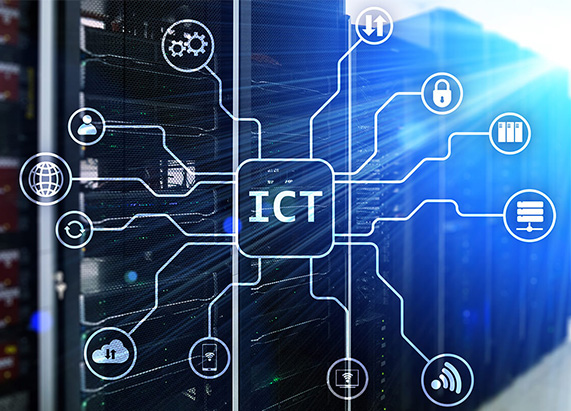Information and Communication Technology (ICT) is a broad field that has become the backbone of modern society. It includes all technical means used to handle information and aid communication. But what exactly is the “technology” part of ICT? Understanding this component is key to appreciating how we connect, work, and live today. This post will break down the concept of technology within ICT, explore common examples, and discuss its profound impact.
Understanding ICT: A Quick Overview
Before diving into the technology itself, let’s clarify what ICT encompasses. ICT is an umbrella term for technologies and systems that facilitate communication and the management of information. It merges computing with telecommunications, allowing users to access, store, transmit, understand, and manipulate information. Think of it as the digital infrastructure that powers our interconnected world, from your smartphone to global business networks.
Defining “Technology” in the Context of ICT
In ICT, “technology” refers to the specific tools, equipment, and systems—both hardware and software—that enable the processing and exchange of digital information. It is the practical application of scientific knowledge to create the devices and programs we use every day. This technology is not just about the final product, like a laptop or a mobile app. It also includes the underlying infrastructure, such as networks and servers, that makes everything work together seamlessly.
Core Examples of Technologies in ICT
The technologies within ICT are varied and constantly evolving. They can be broadly categorized into hardware, software, and network technologies.
Hardware Technologies
Hardware forms the physical foundation of ICT. These are the tangible components you can see and touch.
- Computers and Servers: From personal desktops and laptops to powerful servers that store and process vast amounts of data for websites and cloud services.
- Mobile Devices: Smartphones and tablets are powerful, portable computers that have revolutionized how we communicate and access information on the go.
- Peripherals: Devices like printers, scanners, keyboards, and webcams extend the functionality of our main computing devices.
- Storage Devices: Hard drives, solid-state drives (SSDs), and USB drives provide the means to store digital data locally.
Software Technologies
Software is the set of instructions that tells the hardware what to do. Without software, hardware is just an inert object.
- Operating Systems: Programs like Windows, macOS, Android, and iOS manage all the hardware and software on a device, providing a user interface.
- Applications: These are programs designed for specific tasks, such as word processors (Microsoft Word), web browsers (Google Chrome), and communication apps (WhatsApp).
- Databases: Systems like MySQL and Oracle are used to organize, store, and retrieve large quantities of structured information efficiently.
- Cloud Computing Platforms: Services like Amazon Web Services (AWS) and Microsoft Azure provide on-demand computing services over the internet, including storage, processing power, and software.
Network Technologies
Network technologies are the invisible threads that connect everything, allowing devices to communicate with each other.
- The Internet: A global network of computers that allows for the exchange of data and communication across continents.
- Wireless Networks: Technologies like Wi-Fi and Bluetooth enable devices to connect without physical cables, offering convenience and mobility.
- Mobile Networks: Cellular networks (e.g., 4G, 5G) provide internet access and voice communication for mobile devices over wide geographical areas.
- Routers and Switches: These are essential hardware devices that direct data traffic across networks to ensure information gets to its correct destination.
The Impact of ICT Technologies on Society and Business
The integration of these technologies has reshaped nearly every aspect of modern life.
For businesses, ICT has driven efficiency and innovation. It enables streamlined operations, automates routine tasks, and opens up new markets through e-commerce. Data analytics, powered by ICT, allows companies to make more informed decisions, while collaborative tools help teams work together from anywhere in the world.
In society, ICT has transformed communication, education, and entertainment. Social media connects people across the globe, online learning platforms make education more accessible, and streaming services offer endless entertainment options. Furthermore, advancements in ICT have led to significant progress in fields like healthcare, with developments such as electronic health records and telemedicine.
In essence, the “technology” in ICT is the engine of our digital age. It is the combination of hardware, software, and networks that turns information into a powerful resource, connecting us and driving progress in ways we could only have imagined a few decades ago.
